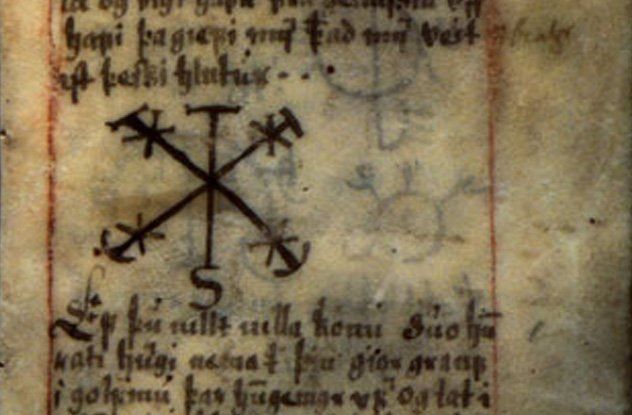

These signs or magic staves began as runic symbols that make up words or names in Old Norse. If you break up the word into its two parts Galdra (from Galdur) meaning magic, and Stafir meaning letters, it makes sense that this family of symbols is based on the runes. Whatever working you’re trying to do will dictate the shape of the symbol you use. Think about the intention you wish to achieve with your magic sigil – Do you wish to draw energy towards you? Put up a shield between you and negative energy that is around you? Try drawing some Aegishjalmur yourself and experiment with the way they make you feel. Looking at it this way, we can picture the arms of Aegishjalmur radiating out from ourselves, directing energies either outward or inward depending on the symbols (terminal figures) on the arms of the sign and the intention of the workings. The arms of the staves grow outward from the core towards everything beyond it. At the centre is the core – the self or the subject of the magical working. Flowers explains the Aegishjalmur as representing the entirety of the universe. By changing the number of arms as well as the location and shape of the forked symbols on each arm, you can personalize the nature of the magical working to accomplish various intents. This style of symbol is very common within the Icelandic magical workings because it’s simple to learn and you can easily adapt it to suit your particular needs.

While most people think Aegishjalmur or “Helm of Awe” is a single symbol, it’s actually a family of widely varied symbols built around a common form: a generally round, symmetrical sigil with an even number of forked arms radiating outward from a centre point.


 0 kommentar(er)
0 kommentar(er)
